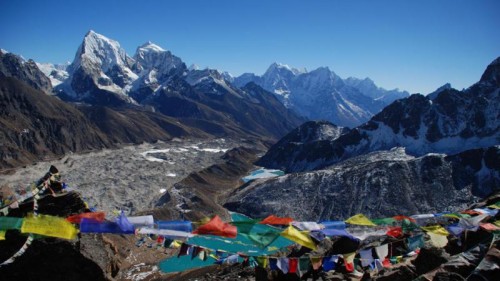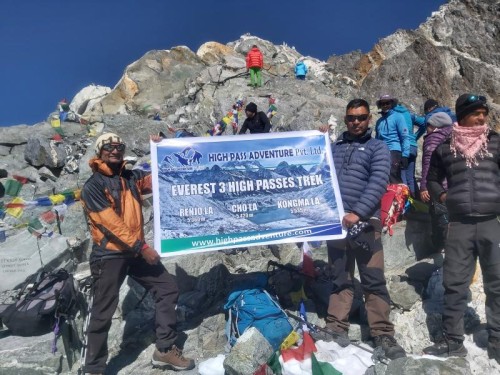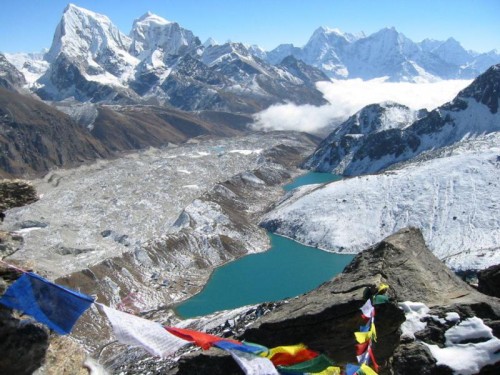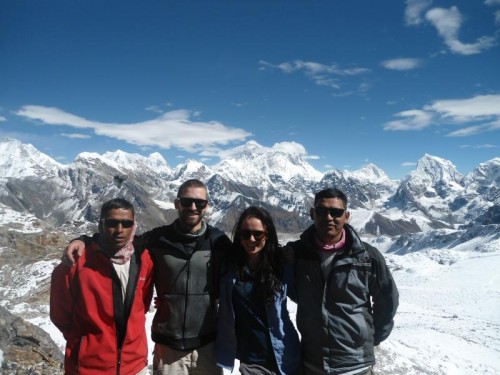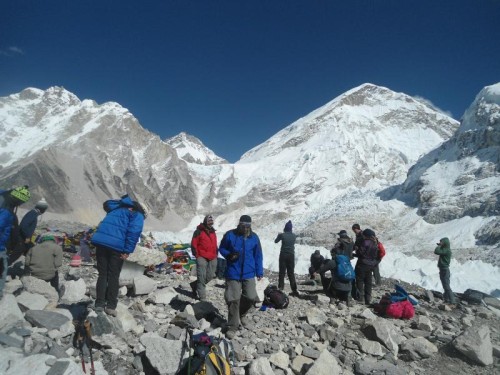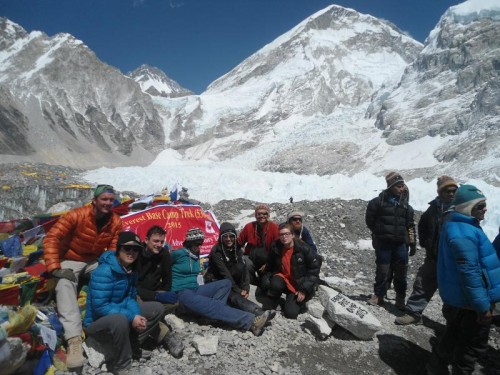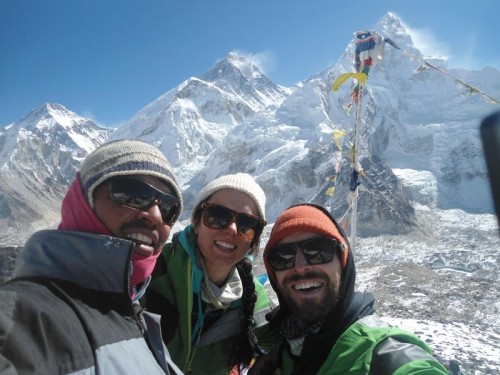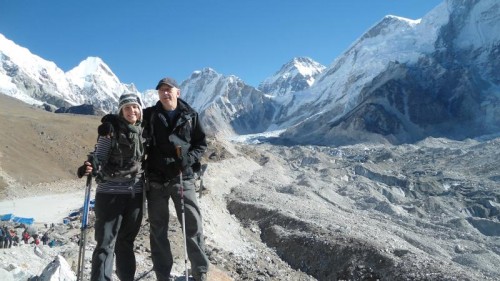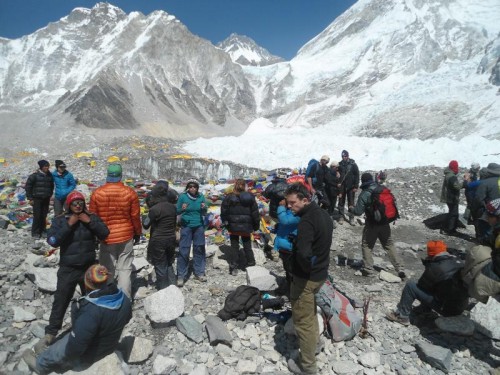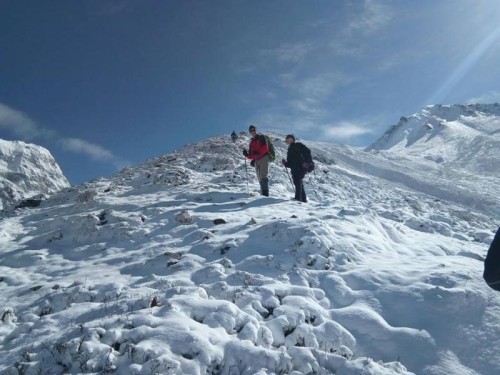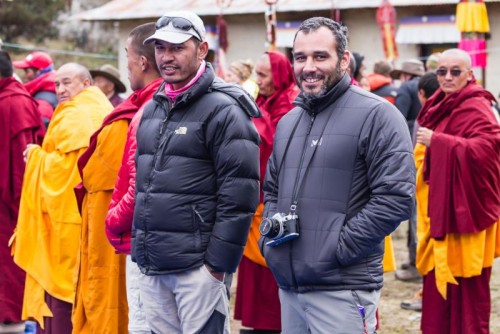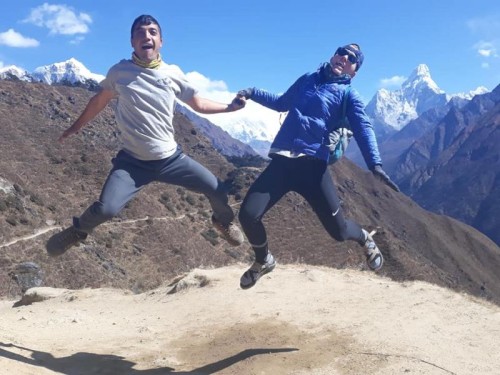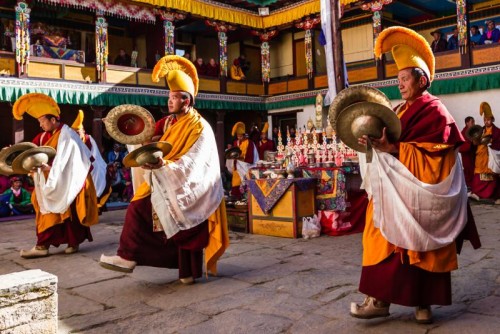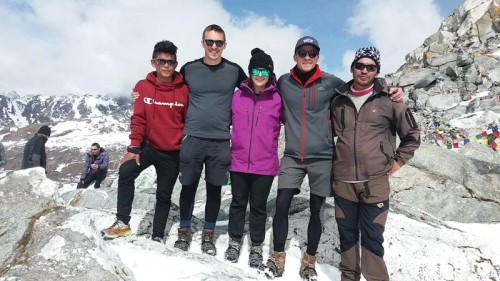Lukla Flight Information
Lukla is a small town and the starting point for all treks to the Everest region. It serves as a gateway with a small airstrip to Everest Trek, and there is no road access from Kathmandu to Lukla. Trekkers must either fly to Lukla or trek from Phaplu or Jiri. Regular flights to Lukla are operated by Tara Air, Summit Air, and Sita Air from Kathmandu or Ramechhap during the main trekking season.
Be prepared for potential delays or cancellations, as weather conditions can impact flights to and from Lukla. If flights are delayed or canceled, you may need to add a few extra days to your itinerary. We will do our best to adjust the itinerary as needed.
During peak trekking months—March, April, May, September, October, and November—flights to Lukla may operate from Ramechhap/Manthali due to Nepal's aviation rules aimed at avoiding congestion and air traffic delays. Ramechhap Airport is approximately 130 kilometers east of Kathmandu and requires a 3 to 5-hour drive from Kathmandu.
Regarding luggage, there is a weight limit of 15 kg per passenger, including your hand-carry bag. It is advisable to keep your luggage under this limit to avoid extra charges. In case of an overload, your bag may be transported on a subsequent flight.
If you do not have extra time before or after your trekking itinerary, you might consider taking a helicopter close to Lukla or shifting your trekking route to another region. Arranging for one or two additional days in your trip is highly recommended to accommodate potential flight delays or cancellations and to ensure you can board your pre-planned international flight.
Require permits for Everest 3 Passes Trek & Island Peak Climbing
For the Everest Three High Passes Trek and Island Peak Climbing, you need the following permits: Sagarmatha National Park entrance permit, Khumbu Pasang Lhamu Rural Municipality entrance permit, Trekker's Information Management System (TIMS) Card, and Island Peak Climbing permit. The Everest Three Passes Trek and Island Peak Climbing trip is situated in the Khumbu Pasang Lhamu Rural Municipality within Sagarmatha National Park, so it is necessary to obtain both the national park permit and the Khumbu Pasang Lhamu Rural Municipality permit for entry. The TIMS card helps track trekkers and ensures their safety and security during the trek.
All of these permits are mandatory for the Everest Three Passes Trek and Island Peak Climbing. You must carry these permits with you throughout the entire trek and present them at every checkpoint along the way. If you are found trekking without these permits, you will need to purchase them on the spot at double the cost as a penalty, or you may be required to turn back.
Requiring permits for the trip are given below:-
TIMS (Trekkers Information Management System) Card:
- Cost: US$ 20 per person, per trek
Sagarmatha National Park Entrance Fees:
- Cost: US$ 30 per person, per trek for all foreigners
- Cost: US$ 15 per person for SAARC (South Asian Association for Regional Cooperation) citizens
Island Peak Climbing Permits:
- It Cost: US$ 75 per person for December, January, February, June, July, and August
- It Cost: US$ 125 per person for September, October, and November
- It Cost: US$ 250 per person for March, April, and May
Everest 3 Passes Trek & Island Peak climbing trip cost
The cost for the Everest Three Passes Trek combined with Island Peak Climbing varies based on several factors, such as the season, trekking agency, duration of the trek, group size, and level of service. For our 20-day itinerary, which covers the period from arrival to departure, the cost ranges from $2,200 to $2,800. This cost includes transportation, domestic flight costs, accommodation, food, guide, porter, climbing guide, and one night of tent camping for Island Peak Climbing.
However, it does not include emergency evacuation, drinks, or extra luxury accommodation. It is recommended to obtain detailed quotations from several reputable trekking agencies to compare and choose the best option that suits your needs and budget. We guarantee to provide you with a reasonable cost and high-quality service for the Everest Three Passes Trek and Island Peak Climbing trip.
Hire a experienced Climbing Guide for the Trip
Everest Three High Passes Trek and Island Peak Climbing trip is challenging but rewarding due to its walking on the high altitude terrains, making it essential to hire an experienced climbing guide. The route involves navigating village, forests and alpine terrain at higher elevations to cross the three high passes. Finding the right path in the higher elevations can be mentally challenging and make the journey more demanding. An experienced guide will help ensure you stay on track and manage the trek and climb safely and enjoyable. A guide is invaluable for ensuring you reach your destination successfully and with minimal stress, assisting with navigation and supporting you every step along the way.
In addition to route navigation and climbing assistance, the guide will explain the local culture and natural surroundings, facilitate interactions with local people, and ensure a stress-free journey. They will also manage accommodation, food, transportation, tent camp at island peak base camp and permits throughout the trip, and provide assistance in any situation. Our team of experienced and professional guides is dedicated to making your trek as comfortable and stress-free as possible, with full responsibility, care, honesty, and kindness.
Best Season for Everest 3 Passes Trek & Island Peak climbing
The best seasons for the Everest Three Passes Trek and Island Peak Climbing are pre-monsoon (spring) and post-monsoon (autumn). Both these seasons provide the best combination of favorable weather, clear skies, and manageable trail conditions for a successful trek and climb.
Spring (March to May)
March: In early spring, it is still quite cold at higher altitudes. Snow may still be present on some passes, but temperatures start to rise. Daytime temperatures are comfortable for trekking, ranging from 10-15°C (50-59°F) at lower elevations. However, nights can be cold, especially above 4,000 meters, where temperatures can drop to -10°C (14°F) or lower. For Island Peak climbing, proper preparation with trekking and climbing gear is essential, along with the guidance of an experienced guide.
April: Temperatures continue to warm up, making it one of the best months for trekking and climbing. Daytime temperatures range from 12-18°C (54-64°F) at lower elevations, with nights still cold but more bearable. Snow and ice conditions improve on the passes and Island Peak. This month is the best time for this trip due to its mild and stable weather conditions, clear skies, and good visibility.
May: The weather is warmer, and the trails are more accessible. Daytime temperatures can reach 20°C (68°F) or higher at lower elevations. The higher regions are more comfortable for trekking and climbing, though there is a higher chance of pre-monsoon showers towards the end of the month. This month is also the best time for climbing higher mountains like Everest and others. Therefore, it is a recommended time for all trekkers to undertake the Everest Three High Passes Trek and Island Peak Climbing.
Autumn (September to November)
September: The monsoon season ends, leaving the trails lush and green. Early September can still have some remaining rain, but as the month progresses, the weather stabilizes. Daytime temperatures at lower elevations range from 10-15°C (50-59°F), while nights can be cooler. For this month, it is essential to prepare with rain gear and have an experienced guide for Island Peak Climbing. However, visibility for views may sometimes be limited.
October: Considered the best month for trekking and climbing in the Everest region, the weather is stable, skies are clear, and temperatures are moderate. Daytime temperatures range from 12-18°C (54-64°F) at lower elevations, with cooler nights, especially at higher altitudes. Therefore, this month is highly recommended for the Everest Three High Passes Trek and Island Peak Climbing.
November: The weather remains clear and stable, but temperatures start to drop, especially in the latter half of the month. Daytime temperatures range from 10-15°C (50-59°F), and nights can be quite cold, dropping below freezing at higher elevations. During this month, proper preparation for cold weather and an experienced trekking guide are essential for successfully completing the Everest Three High Passes Trek and Island Peak Climbing.
Winter and Summer Seasons:
Both winter and summer/monsoon seasons are not recommended time because its offer unique challenges and experiences for the Everest Three Passes Trek and Island Peak Climbing, requiring thorough preparation and a good understanding of the conditions.
Winter season: The extreme cold can make trekking and climbing difficult and uncomfortable. Proper gear and preparation are essential. Heavy snowfall can make the passes and climbing routes more challenging and sometimes impassable. Some teahouses and lodges may be closed due to the cold and fewer trekkers, especially at higher altitudes. Winter is only recommended for those seeking a challenging adventure, as it offers a unique and demanding trekking and climbing experience.
Summer Season: Trails can be muddy and slippery, with landslides being more common. Visibility may be reduced due to frequent cloud cover and fog. Increased presence of leeches and insects is likely due to the wet conditions. Some teahouses and lodges may be closed or offer limited services along the trekking trail. However, this season is best for experiencing lush, green landscapes with fewer crowds and lower costs. It does involve dealing with heavy rain, mud, and reduced visibility, so an experienced guide and proper trekking gear are essential.
Everest 3 High Passes Trek & Island Peak Climbing Difficulty
Combining the Everest Three High Passes Trek with Island Peak Climbing is a demanding endeavor due to the trek's duration, high altitudes, challenging terrain, weather conditions, and the technical nature of the climb. Both the trek and the climb require significant physical and mental preparation, as well as proper acclimatization. For Island Peak Climbing, previous climbing experience and technical skills are essential.
The total duration for the trek and climb is 20 days from arrival to departure in Kathmandu. During the trek, you will need to walk 5 to 8 hours a day, dealing with significant ascents and descents on high-altitude terrain. Physical training, including regular cardiovascular exercise, strength training, and long-distance hiking, is necessary to build endurance. Acclimatization days are crucial to reduce the risk of altitude sickness.
For Island Peak Climbing, essential climbing skills include experience in ice climbing, the use of climbing gear, and mountaineering techniques. If you lack experience, consider taking a basic mountaineering course.
In addition to these preparations, it is important to be ready for cold weather and high-altitude conditions with appropriate gear, including layered clothing and high-quality trekking and climbing equipment. An experienced trekking and climbing guide is also vital to manage the difficulties of the Everest Three High Passes Trek and Island Peak Climbing.
Our experienced team, tea houses along the route for accommodations, a flexible itinerary with acclimatization days, slow-paced walking, and proper trekking and climbing gear will help you successfully complete the Everest Three High Passes Trek and Island Peak Climbing without unnecessary hassle.
Acclimatization to reduce the Altitude Sickness for the Trip
An acclimatization day is necessary during the 17-day Everest Three High Passes Trek and Island Peak Climbing because it is need to reaching 6,189 meters through Three High Passes Renjo La, Cho La, and Kongma La. The trek starts at 2,800 meters at Lukla and gradually climbs to three high passes and Island Peak Base Camp, passing through villages, forests, and other high-altitude places. As you ascend, oxygen levels and air pressure decrease compared to sea level. Once you reach an altitude above 3,500 meters, you may experience symptoms of altitude sickness, such as nausea, vomiting, diarrhea, headaches, loss of appetite, tiredness, dizziness, and sleeplessness.
When ascending to 3,500 meters, be honest with your guide about how you are feeling. Your guide will advise you to walk slowly and may suggest sleeping at a lower altitude before ascending further.
Namche Bazaar and Gokyo Lake is designated as our acclimatization rest day in the Everest Three High Passes and Island Peak Climbing itinerary. These rest day and gradual ascent help prevent altitude sickness and allow you to adapt to the environment. If you experience any symptoms of altitude sickness during the Everest Three High Passes Trek and Island Peak Climbing, it is important to address them immediately to avoid complications. To prevent these issues, follow your guide's instructions, as they are knowledgeable about high-altitude sickness. This process, known as acclimatization, helps reduce the risk of altitude sickness.
To prevent altitude sickness, you should follow the itinerary closely, as proper acclimatization helps your body adapt to higher elevations. Additionally, stay hydrated by drinking plenty of water, eat a well-balanced diet with sufficient carbohydrates, maintain a comfortable pace, and avoid alcohol and sedatives. By adhering to these guidelines, you can reduce the risk of altitude sickness and have a safer and more enjoyable trek on the Everest Three High Passes Trek and Island Peak Climbing. However, if you continue to feel unwell despite following these recommendations, you should return to a lower altitude.
Food and Accommodation, drinking water during the Trip
The Everest region is a popular trekking destination in Nepal, and the Everest Three High Passes Trek combined with Island Peak Climbing is also located in this region. The trekking trails and routes in the Everest region are well-managed, and accommodations are overseen by Sagarmatha National Park.
There are numerous accommodations and restaurants along the trekking trail, catering to the popularity of the region. Each year, new lodges and facilities are added to enhance the services for trekkers. For the Everest Three High Passes Trek combined with Island Peak Climbing, here’s what you can expect regarding food, accommodation, and drinking water:
Accommodation:
During the trek, you will stay in teahouses (basic lodges) that offer a bed, blankets, and a shared bathroom. The rooms are generally basic but comfortable enough for trekking. In higher regions, facilities may be more basic. A variety of lodges and teahouses are available along the trek, ranging from basic to more comfortable options, depending on the location and altitude.
At the base camp of Island Peak, accommodation is provided in tents set up by High Pass Adventure. These tents are typically equipped with sleeping bags and mats, designed to offer comfort and protection from the elements.
Food:
Most lodges offer a range of local and international food options, including traditional Nepali dishes as well as Western meals. The menu may vary depending on the lodge and altitude. Meals are typically served in teahouses along the trekking route. You can expect a variety of options, including traditional Nepali dishes like dal bhat (lentil soup with rice), momo (dumplings), and international choices such as pasta, noodles, and sandwiches. In higher-altitude areas, the menu might be more limited. While climbing Island Peak, food is provided by the expedition staff. The meals are usually simple but nutritious to maintain energy levels and often include a mix of local and international dishes. Ingredients are typically carried from lower altitudes to ensure quality and availability.
Drinking Water:
It's important to stay hydrated, and drinking purified water is essential. You can purchase bottled or boiled water at teahouses along the trek, but the price tends to increase at higher altitudes. For a more cost-effective option, you can use water from running taps and purify it with tablets or a filter to ensure safety. Using purification tablets or a filter is highly recommended for all trekkers. Avoiding alcoholic drinks is a good idea to prevent altitude-related issues as you ascend. Alcohol can dehydrate you and exacerbate the symptoms of altitude sickness.
Communication in the Everest Region
Everest Region is popular trekking destination In Nepal. There is good mobile network service around Everest base camp trekking area but not a Gokyo Valley and Chukkung Valley. The internet service available whole Everest Region but tea-houses and lodges provide internet with some extra charge. If you have not Nepali SIM card for communication with your family and not use the internet service, our guide help to you for pass the massage because always our guide have cellular phone and he contact to Kathmandu trekking office about to know the trek and your health condition.
Hence, travelling is important things in life so we make sure you about safe and healthy during the trekking in Nepal. Nowadays, you can get the local SIM card in Kathmandu airport after arrival to use the 3g and 4g internet service because most of the trekking routes in Nepal have Mobile Network service.
Tipping information
The Guide, porter, driver and all workers who are working in tourism filed, they except some tips during your Tour Trekking and others activities in Nepal. Tipping is judgment of workers from travelers and workers offers the tips end of the trek. Travelers tips 10% of their payable amount but you can give to them depend on their services.
Hence, it is important to High Pass Adventure working team who take care to you all the time during the visiting in Nepal, motivated with outstanding service and offer inspiring trip in a lifetime experience.
Guide: $12-$15 per day
Porter: $8-$10 per day
Assistant Guide: $8-$12 per day
Climbing Guide: $100 (for whole trip)
These tips are highly recommended to motivate the team and reward them for their outstanding service, contributing to a memorable and inspiring experience.
Trip extension
If you have extra time after complete the trek, you can do different activities or different short trek in Nepal. We have many short tour packages and adventure activities such as Chitwan National park and Bardiya National Park for Jungle safari tours. You can visit Pokhara city, Nagarkot Hiking, Dhampus hiking or day Rafting tripin Trisuli River.
Adventure activities are like paragliding, canoeing, Ultra light flight, Bungee Jump and Mountain Biking. These all package are extra activities as optional tours and not included in your package cost. If you will do these activities after the trip with us, we arrange at a reasonable cost and we give to you good discount.
Trekking and Climbing Gear Information
Trekking gear and equipment are most important for the trekking. Either you have to bring those things or you can buy here in Kathmandu. Also you can hire in Kathmandu Trekking gear shops.
Trekking Gears
- Reading / writing material
- Health requirements arranged
- First-aid kit; should contain lip salve, Aspirin, Band Aids, anti-histamine, Imodium or similar tablets for mild cases of diarrhea
- Re-hydration powder, extra prescription drugs you may be taking if any particular
- Wet wipes for cleaning can be purchased in Kathmandu.
- Money: cash/credit card
- Down Sleeping bag and jacket provided by High Pass Adventure (if needed)
- Light weight Towel
- Day pack (25-30 liter) to carry your personal needs during the day
- Walking shoes and sport shoes 1/1 pair
- Normal and warm gloves 1/1 pair
- Sun glasses and sun block cream 1/1 pieces
- Down Sleeping Bag and down warm jacket 1/1 pieces
- Normal Socks 2/3 pair
- Fleece Jacket and Trouser 1/1 pieces
- Head lamp 1 pic
- Gore-Tex Jacket and Trouser 1/1 pieces
- Water bottle 2 pieces
- Trekking stick (pole) 1 pair
- T-shirt 4/5 pieces
- Bandanna of scarf
- Sleeper (sandal) one pair
- Wind and waterproof Jacket & Pants
Climbing Gears
- Walking shoes and Climbing boot 1/1
- Normal and Climbing gloves 1/1
- Crampons 1
- Sun glasses and sun block cream 1
- Ice axes 1
- Harness 1
- Jummer 1
- Carebiners and Screw Gate 1/1
- Sleeping Bag and down filled Mattress 1/1
- Normal and Climbing Shocks 3/2
- Fleece Jacket and Trouser 1/1
- Down Jacket and Trouser 1/1
- Helmet 1
- 8 Finger/ Descender 1
- Head lamp 1
- Gore-tex Jacket and Trouser 1/1
- Water bottle and Thermos bottle 1/1
- Climbing bag


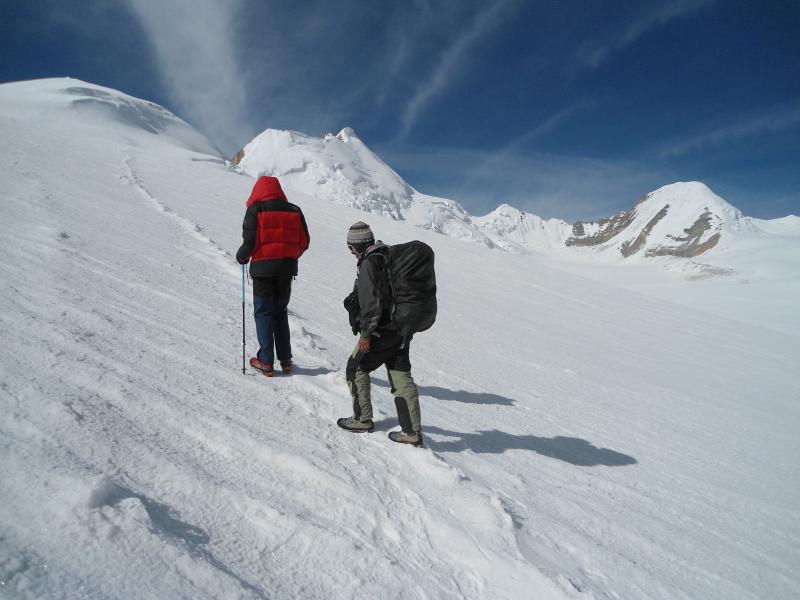




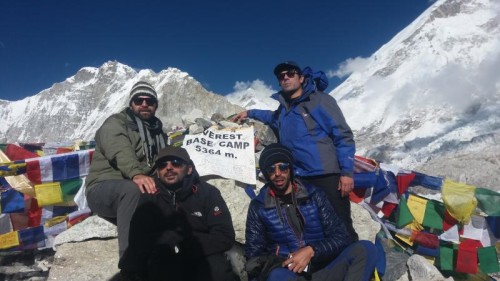
 USD 1340
USD 1340